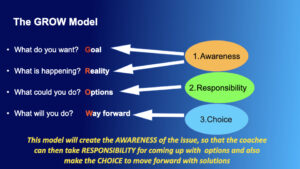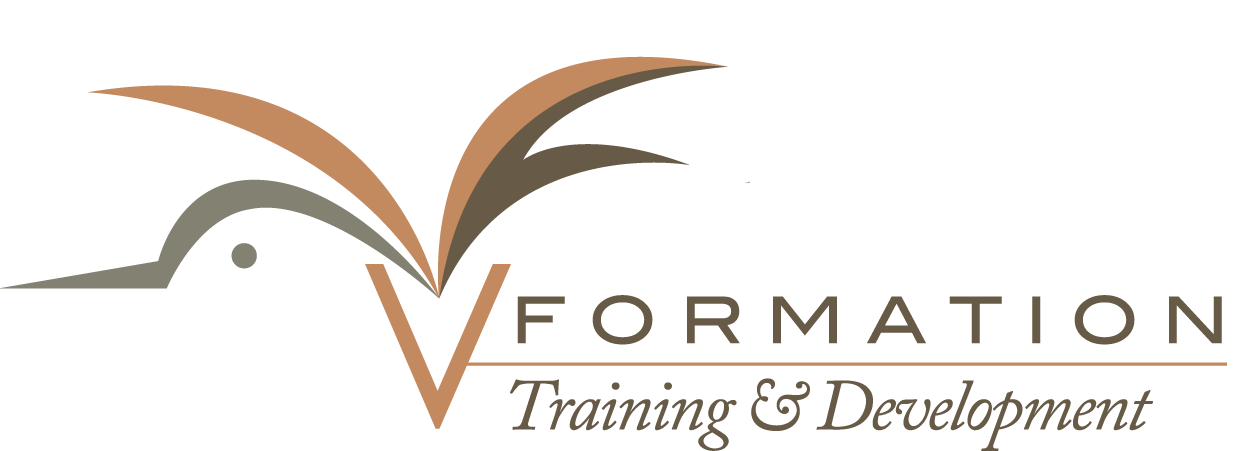
Blog
Culture and the Conversations that Drive it
By Tony Ragoonanan
When I first got into the learning and development space, I focused primarily on professional development training, but over the years, there has been a gradual shift. This shift was not only the type of development that individuals needed, but it extended to a much broader idea, the type of culture that companies want to create. How this happens is often tied to the interactions, relationships and processes within the company and even more specifically, the conversations around how we manage them all.
The following three conversations are not the only ones but they are the most important help to support and manage the behaviours around you and help to drive the right culture. They also happen to be crucial components of the performance management process.
So, let’s get right into it with the…
1. THE EXPECTATIONS CONVERSATION
The expectations conversation is the conversation that a leader will have with each individual on their team at the beginning of the financial year and preferably at the beginning of every quarter. The goal of this conversation is to ensure that there is clarity as to WHAT needs to be achieved and HOW it should be done. This means that the discussion will involve goals as well as competencies and their corresponding behaviours.
Remember that a competency is an observable and measurable pattern of knowledge, skills, and abilities that an individual needs to perform work roles successfully. A competency also has a behavioural component and represents what a defined competency looks like “in action.” It is also crucial that these are aligned with the organization’s values.
Remember that this is a DISCUSSION, meaning that it must have input from both leader and employee.
For this conversation, the leader must have a plan – don’t go into this meeting unprepared. Leaders should ask themselves key questions: What is the personality of this individual? How will he/she react? What objections will they have? How can I inspire this person?
Here are additional tips to remember about this conversation:
- The leader must be authentic (genuine) and must not sound rehearsed.
- Always leave room for the employee to respond.
- The location -Where are you having this conversation? It’s sometimes better that the leader avoids a position that shows superiority. It may be a good idea to choose a location that will align with the informal mood of the conversation unless you are online.
- Please keep in mind that the purpose of this conversation, in addition to establishing clarity, is to increase trust and to send the message to the employee that you are on their side as a leader.
Here is a possible model that can be used for this conversation:
- Describe the situation – This can include a summary of performance from the previous year and the plan for progress in the current year (A “Big Picture” view)
- Confirm understanding – Ensure that the employee understands and has the opportunity to seek clarity
- Share expectations – Communicate goals and expected behaviours
- Seek agreement – Get an agreement and commitment from the employee but also make sure that the employee can question and clarify the information
- Create a plan – Define the next steps and how you are going to maintain accountability. How will the employee know that they are on the right track?
Another dimension of the Expectations Conversation is the conversation with the team. In addition to team goals, a discussion on how everyone will work together to create both synergy and productivity is necessary. Keep in mind that many may still work in a hybrid environment and are not physically together so how collaboration will happen is also going to be an important topic for discussion.
2. PERFORMANCE CONVERSATIONS
The performance conversations will include the formal appraisal but it is not necessarily limited to only one conversation at the end of the financial year. Just like the official appraisal, there can and should be planned quarterly conversations to check:
- Results compared to expectations
- Demonstration of competencies/behaviours
- Successes and areas of development
This is also a two-way conversation that can also include feedback, both positive and negative, to the individual as well as the team. The purpose is to enhance performance by making improvements throughout the year. The employee must always be given a chance to respond.
A point to note is that conversations like these may have an element of defensiveness if we have not been vigilant in the leader/employee relationship over time. What was the nature of the relationship? Was trust built? With this in mind, it may be a good idea to keep the mood of this conversation informal and remember the focus should be on developing the employee and your desire for their well-being.
3. COACHING
All leaders need to coach their employees. Coaching is a specific sequence of structured conversations used to help an individual to change their behavior or attitude.
Coaching is unlocking a person’s potential to maximize their own performance. It is helping them to learn rather than teaching them.
-John Whitmore, in Coaching for Performance.
Coaching aims to build awareness, responsibility, and choice. In other words, it explores the opportunity for an individual to increase awareness of their challenge, take responsibility for coming up with options, and make the choice to change. A key reminder here is the person to be coached must be a willing participant.
Some characteristics of coaching are as follows:
- It is focused on future behavior
- It is developmental
- It is inquiry-oriented (based on questioning)
- It focuses on one challenge at a time
- It involves a series of conversations over time
A commonly used model is the GROW model (Figure 1).
Figure 1

Here are some examples of questions to help you along:
GOAL
- What would you like to focus on today?
- What’s important to you at the moment?
- What new skills do you want to learn or develop?
REALITY
- What is working well at the moment?
- What do you need?
- What challenges are you facing at the moment?
OPTIONS
- What action step is the best use of your time at this moment?
- What strengths can you use to move forward?
- Whatever your first step is, can you think of anything that might stop you from doing it?
WAY FORWARD
- On a scale of 1 to 10, how motivated are you to achieve your goal?
- What will it take to get that motivation closer to a 10?
- How do you want to be held accountable for this goal?
- What steps are you going to take this week?
Remember that the coach only asks the questions, the employee being coached makes the choices and final decisions.
In Conclusion
It is probably fair to describe these conversations as the nucleus of performance management. It is, however, the responsibility of leaders in the organization to initiate these conversations and manage them well in order to ensure alignment between behaviors and goals. It can make a difference in the success of achieving both short and long-term goals.
For those of you who feel that this is an area that may of value to your leaders or to your team as a whole, please do not hesitate to contact me at the phone number or email below or you can fill in your information here:
Tony  Ragoonanan is the Founder of V-Formation Training & Development. As a Trainer and Performance Management Specialist, he helps individuals, teams, and businesses to align behaviours and goals, create the right organizational culture and maximize capability. Outside of this, it’s all about family, football, and fitness!!
Ragoonanan is the Founder of V-Formation Training & Development. As a Trainer and Performance Management Specialist, he helps individuals, teams, and businesses to align behaviours and goals, create the right organizational culture and maximize capability. Outside of this, it’s all about family, football, and fitness!!
868-681-3492 | tonyr0909@gmail.com




Leave a reply